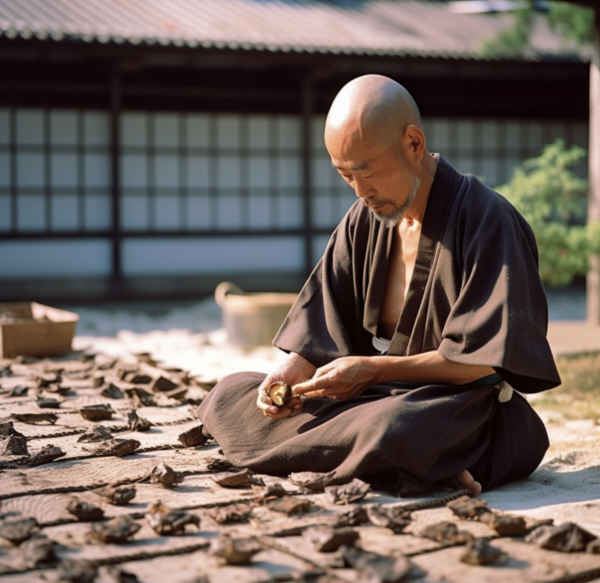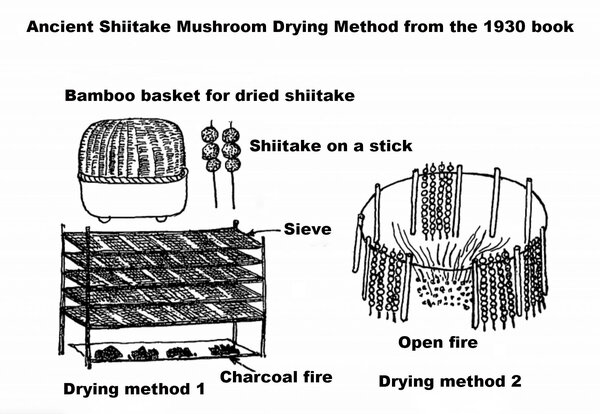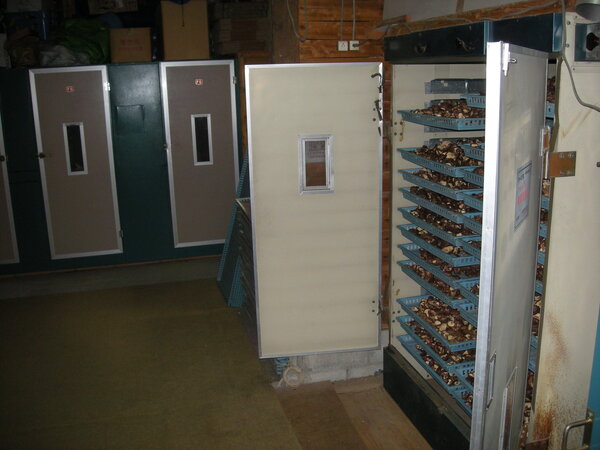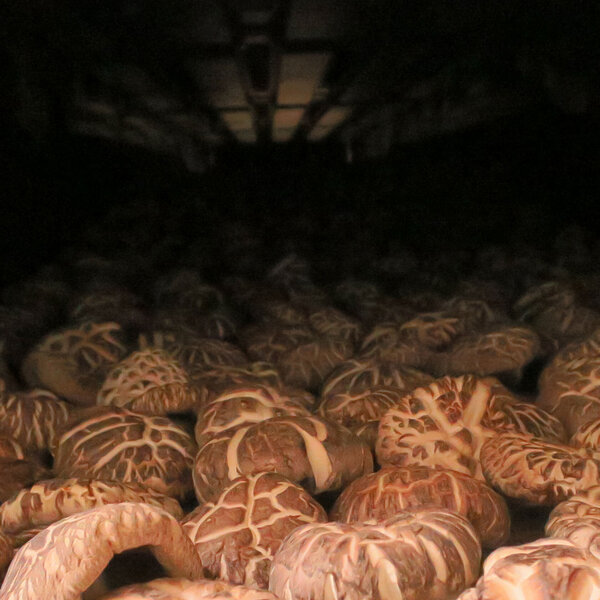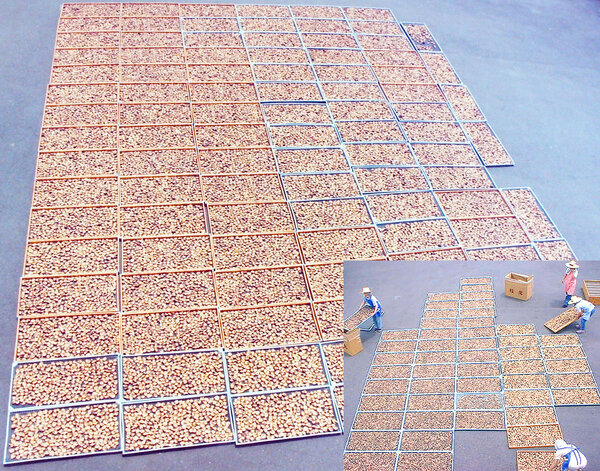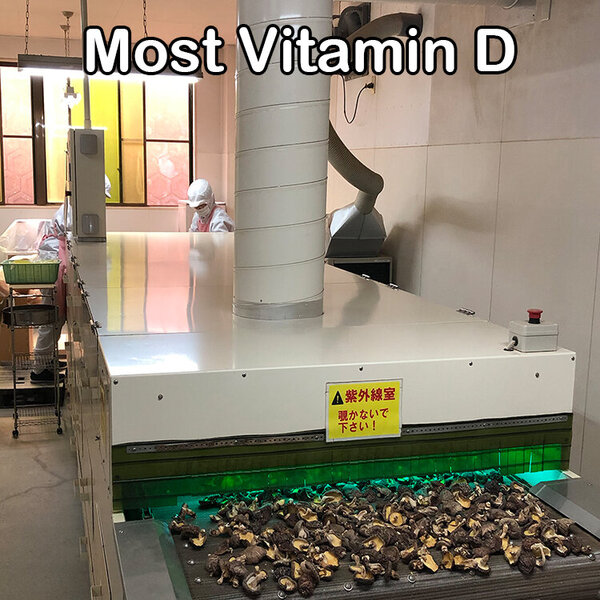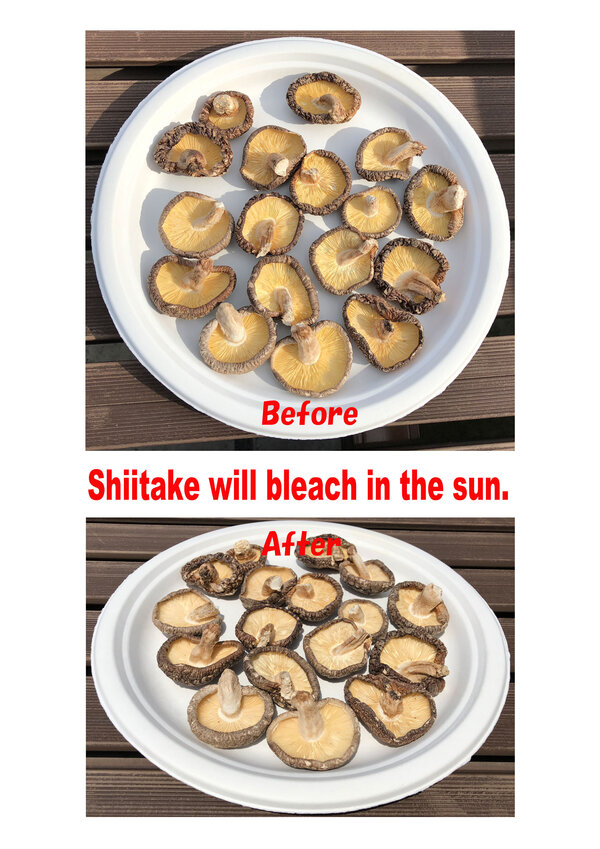Sun-drying can easily be done at home!
Tag: #Sun-Drying #Shiitake Mushroom #UV-B #Vitamin D #SunDrying #ShiitakeMushrooms #DriedShiitake #Homemade #DryingTechniques #PreservingFood #NutritionalBenefits #HealthyEating #FoodPreservation #CookingTips
Table of Contents
"The Wonderful Tradition of Japan": What is the True Meaning of Sun-Drying Shiitake Mushrooms?
Are you familiar with the concept of "sun-drying" shiitake mushrooms? As the term suggests, it refers to a method of drying food using the power of the sun. Many people might imagine sun-drying rice or dried persimmons. In this issue, we will talk about "sun-drying dried shiitake mushrooms" and explain the process by which SUGIMOTO SHIITAKE increases the vitamin D content of shiitake mushrooms by exposing them to UV-B light.
Misunderstanding about Sun-Drying: Summertime re-drying is the truth.
"Sun-drying" can only be done in the midsummer. There is often a misconception that sun-drying was the method used to dry shiitake mushrooms until recent years. However, sun-drying at low temperatures has the disadvantage of resulting in less delicious mushrooms. The reason for this is that wood-cultivated shiitake mushrooms start decaying soon after harvesting, and if dried slowly in the sun, their quality degrades progressively. While intense midsummer sunshine might work, the weaker sunlight in the spring and autumn harvest seasons isn't suitable for sun-drying. Nevertheless, until plastic bags became available in recent years, it was challenging to store dried shiitake mushrooms for an extended period, so in the consumer regions, they were sun-dried during hot summer days following the rainy season to maintain their dried state. In other words, sun-drying took place at the consumption site, not the production site.
In the "Tenzo Kyokun," a scripture considered the bible of Zen temple cuisine, there is a story of an elderly Tenzo (cook) sun-drying shiitake mushrooms on tiles spread out under the scorching midsummer sun. When Dogen asked, "Why are you doing such hard work under this intense heat?", the response was, "This is the best time to dry them. Everything has its season. If not now, when should I dry them?" The method of sun-drying shiitake mushrooms on tiles laid out on the ground in midsummer is a good approach, as it enables complete drying from above and below.
Picture is an image of the text.
High-Temperature Drying Has Always Been the Norm at Growing Area
So how was drying done at the growing area? In fact, high-temperature drying has been the norm there since at least the 1800s. Drying at high temperatures using fires or charcoal was understood to create more umami components from the shiitake mushrooms. The same was true for aroma components; high-temperature drying was necessary. Moreover, thoroughly drying the shiitake mushrooms to a very low moisture content could prevent rapid deterioration of their flavor.
The following disadvantages of sun-drying are pointed out in "Yama no Hikari," a shiitake cultivation guidebook published in 1930:
Sun-drying results in quality degradation during the drying process due to low temperature.
It is impossible to achieve the unique aroma and color of dried shiitake mushrooms, resulting in poor appearance.
It is not possible to dry them thoroughly.
They can grow mold, and it is impossible to store them for a long period.
Due to poor appearance and flavor, they have no market value.
However, for home use, which we eat ourselves, there is no need to store them for a long time, and they do not need to be of high quality unless they are intended for sale, so they can be dried in the sun by slicing them or otherwise devising ways to dry them quickly and placing them in a well-ventilated area.
Modern Drying Method: Hot Air Drying
Shiitake mushrooms cultivated on natural logs are pesticide-free and perish quickly, so they are hot-air dried immediately after harvesting (at 40-55°C for about 20 hours). Once the dryer is full, harvesting more shiitake mushrooms would damage them, so the harvest is adjusted to fill the dryer just right. This is why wood-cultivated shiitake mushrooms come in various shapes and sizes. However, since they are freshly harvested shiitake mushrooms that are quickly dried at high temperatures, the result is highly flavorful dried shiitake mushrooms.
Our Company's Unique Far-Infrared Drying Finish
The deliciousness of shiitake mushrooms cannot be fully realized by sun-drying alone. Although old-fashioned drying methods like firewood drying and charcoal drying were used in the past, we, at Sugimoto Shiitake, have adapted these traditional methods for our unique far-infrared drying finish.
The dried shiitake mushrooms brought to our factory by producers are further dried by far-infrared radiation to a moisture content of less than 9% (usually about 12%). They are passed under a 240℃ ceramic panel for about 4 minutes, and the internal temperature of the shiitake mushrooms reaches 80℃, evaporating even the eggs of insects. Our company achieves zero insect eggs with only heating and sorting techniques, and while we are a pesticide-free, wood-grown cultivation, we are the only company in the world that has received kosher certification (in Judaism, insects are not allowed to be consumed, so each one is inspected with an electron microscope to be certified).
Increasing Vitamin D Through the Power of Ultraviolet Rays
After bringing out the flavor and aroma through high-temperature drying, the shiitake mushrooms are sun-dried. The benefit of sun-drying is that it increases Vitamin D2 content. Many vegans take Vitamin D3 supplements, which are animal-derived, but sun-drying shiitake mushrooms significantly increases the plant-derived Vitamin D2. The effects of D2 and D3 are the same. Ergosterol contained in dried shiitake mushrooms changes into Vitamin D under the effect of ultraviolet rays. We used to sun-dry every summer, but there were many challenges, such as not getting enough ultraviolet rays without strong midsummer sunlight, and contamination issues due to it being an outdoor operation. Now, we expose the mushrooms to ultraviolet rays inside the factory at the end of the far-infrared drying process, making them the food with the highest Vitamin D content.
USDA has reported that the most Vitamin D rich ingredient is brown mushrooms, exposed
to ultraviolet light, it has 1,110 IU/87g.
USDA National Nutrient Database for Standard ReferenceRelease 28
Our dried Shiitake will become 4x's heavier after rehydration.
If we compare our Shiitake with USDA data, the following calculation can be made.
9680 IU (242μg) / 100g (dried shiitake) ÷ 4 = 2,420 IU (61μg) / 100g rehydrated shiitake
= 1,936 IU (48μg) / 80g (Our Shiitake)
In conclusion, our Shiitake has the most Vitamin D content of any natural foods.
Sugimoto Shiitake's midsummer sun-drying operation (photo taken in 2008)
Currently, all shiitake mushrooms are irradiated with the same amount of UV-B light.
Harness the power of shiitake for your Vitamin D needs.
How to Sun-Dry at Home
Dried shiitake mushrooms produce plenty of vitamin D when exposed to UV rays on your behalf.
Here's how to make your dried shiitake mushrooms even richer in Vitamin D by sun-drying them at home.
Spread the dried shiitake mushrooms on a sieve or similar so they don't overlap.
Expose them to sunlight with the stems facing up. Depending on the need, sun-dry for about 30 minutes to 3 hours. There is an effect even in a short time, but the longer you expose them, the more effective it is. If the UV forecast is "strong 6" or more, one hour of sun-drying is enough. The amount of UV varies by season, so adjust accordingly. If you're drying out humidified dried shiitake mushrooms, sun-dry them until they're completely dry.
After being exposed to strong sunlight, the underside of the dried shiitake mushroom cap will turn whitish. This is proof that sufficient UV rays have been received, so if it turns white, sun-drying is complete.
Allow them to cool sufficiently before putting them in a bag. If you put them in a polybag or similar while they're still hot from sun-drying, they will condense inside the bag.
By following the above steps, you can enjoy the best sun-dried shiitake mushrooms at home.
Academic Papers:
In an experiment at Kobe Pharmaceutical University, when dried shiitake mushrooms were arranged with their stems facing upwards under sunlight with an ultraviolet radiation level of 14.6mW/cm² for 3 hours, the vitamin D2 content, which was initially 0.50μg (20 IU) per dried shiitake, increased to 12.20μg (488 IU) (24 times) in 1 hour, and to 13.70μg (548 IU) (27 times) in 3 hours.
The difference between 1 hour and 3 hours is minimal, suggesting that 1 hour of sunlight exposure is sufficient!
Therefore, a dried shiitake that has been exposed to the sun for 1 hour, then rehydrated and cooked, can provide most of the daily required intake of 15.00μg (600 IU) of vitamin D for an adult in the US with just a single piece.
When the UV index is declared "High" at 6 or above, 1 hour of sun-drying is enough.
References:
"Shiitake and Vitamin D"
"Effect of Solar Radiation on Vitamin D_2 contents in Shiitake Mushrooms(Lentinus edodes)"
The Ultraviolet Index (UVI) is the Ultraviolet Irradiance (UV Irradiance) divided by 25. The UV Irradiance is expressed in W/m² (watts per square meter), and 1 mW/cm² equals 10 W/m². Therefore, when the ultraviolet radiation level of 14.6 mW/cm² (which is equivalent to 146 W/m² when converted to watts per square meter) for 3 hours is converted to the UV Index, it can be calculated as follows: 146 W/m² ÷ 25 = approximately 5.84 Thus, the UV Index equivalent for sunlight with an ultraviolet radiation level of 14.6 mW/cm² for 3 hours is somewhere between "Moderate" (UVI 3 - 5) and "High" (UVI 6 - 7).
Conclusion
In this article, we've explained in detail everything from the history of sun-drying shiitake mushrooms to modern methods, and the commitment of Sugimoto Shouten. Sun-drying in the strong midsummer sunlight increases the Vitamin D content, but today, with high-temperature drying, far-infrared drying, and UV exposure, it is possible to provide high-quality dried shiitake mushrooms more efficiently and safely.
You can also draw out more Vitamin D by sun-drying shiitake mushrooms at home. We hope you'll enjoy the best dried shiitake mushrooms at home, using this article as a reference. In particular, the sun-drying method, which significantly increases Vitamin D2, can be said to kill two birds with one stone for those who are health-conscious. Our bodies make vitamin D when they are exposed to sunshine, but sunbathing won't help people who usually wear sunscreen when they go outside. If you don't want to be exposed to UV rays, let the dried shiitake mushrooms do it for you.
Through this blog post, we hope you've gained a deeper understanding of sun-drying shiitake mushrooms and learned about the commitment and features of Sugimoto Shiitake's dried shiitake mushrooms. We also explained the specific steps for sun-drying at home, so why not give it a try?

